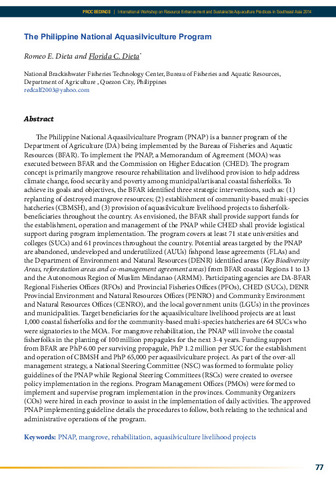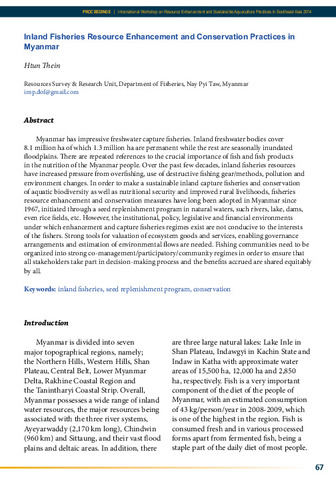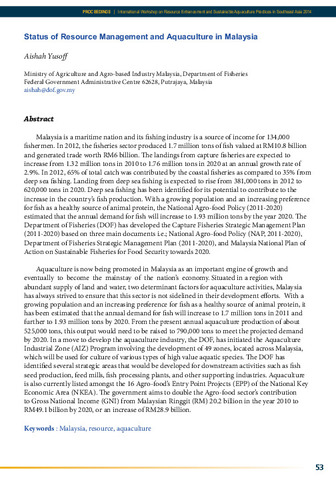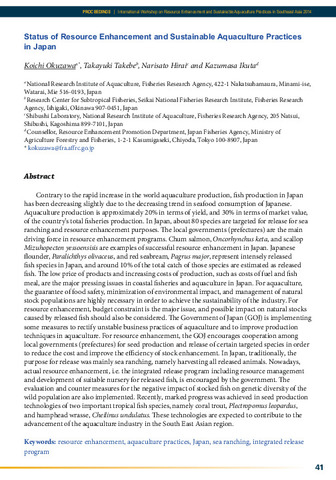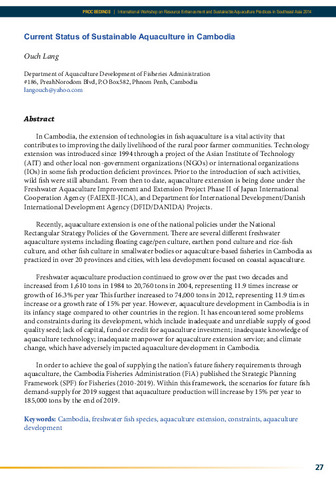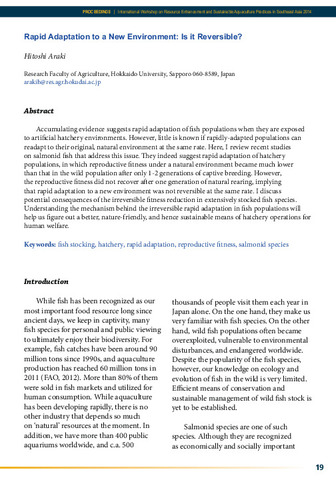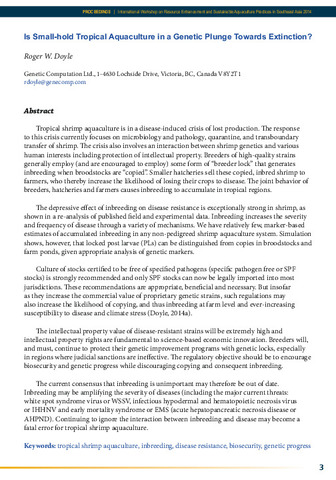SEAFDEC/AQD: Recent submissions
Hiện đang hiển thị các mục 81 - 87 trong tổng số 87
-
The Philippine National Aquasilviculture Program
(Aquaculture Department, Southeast Asian Fisheries Development Center, 2015)The Philippine National Aquasilviculture Program (PNAP) is a banner program of the Department of Agriculture (DA) being implemented by the Bureau of Fisheries and Aquatic Resources (BFAR). To implement the PNAP, a Memorandum ... -
Inland fisheries resource enhancement and conservation practices in Myanmar
(Aquaculture Department, Southeast Asian Fisheries Development Center, 2015)Myanmar has impressive freshwater capture fisheries. Inland freshwater bodies cover 8.1 million ha of which 1.3 million ha are permanent while the rest are seasonally inundated floodplains. There are repeated references ... -
Status of resource management and aquaculture in Malaysia
(Aquaculture Department, Southeast Asian Fisheries Development Center, 2015)Malaysia is a maritime nation and its fishing industry is a source of income for 134,000 fishermen. In 2012, the fisheries sector produced 1.7 million tons of fish valued at RM10.8 billion and generated trade worth RM6 ... -
Status of resource enhancement and sustainable aquaculture practices in Japan
(Aquaculture Department, Southeast Asian Fisheries Development Center, 2015)Contrary to the rapid increase in the world aquaculture production, fish production in Japan has been decreasing slightly due to the decreasing trend in seafood consumption of Japanese. Aquaculture production is approximately ... -
Current status of sustainable aquaculture in Cambodia
(Aquaculture Department, Southeast Asian Fisheries Development Center, 2015)In Cambodia, the extension of technologies in fish aquaculture is a vital activity that contributes to improving the daily livelihood of the rural poor farmer communities. Technology extension was introduced since 1994 ... -
Rapid adaptation to a new environment: is it reversible?
(Aquaculture Department, Southeast Asian Fisheries Development Center, 2015)Accumulating evidence suggests rapid adaptation of fish populations when they are exposed to artificial hatchery environments. However, little is known if rapidly-adapted populations can readapt to their original, natural ... -
Is small-hold tropical aquaculture in a genetic plunge towards extinction?
(Aquaculture Department, Southeast Asian Fisheries Development Center, 2015)Tropical shrimp aquaculture is in a disease-induced crisis of lost production. The response to this crisis currently focuses on microbiology and pathology, quarantine, and transboundary transfer of shrimp. The crisis also ...

